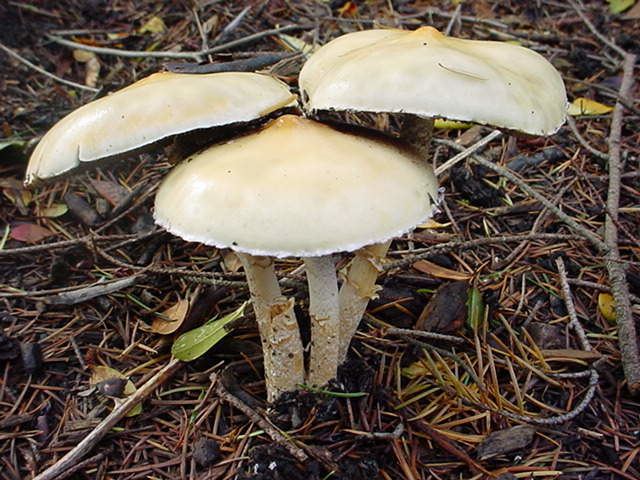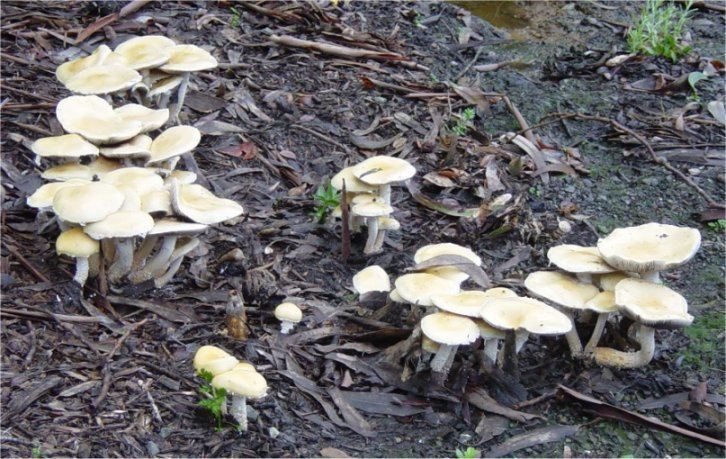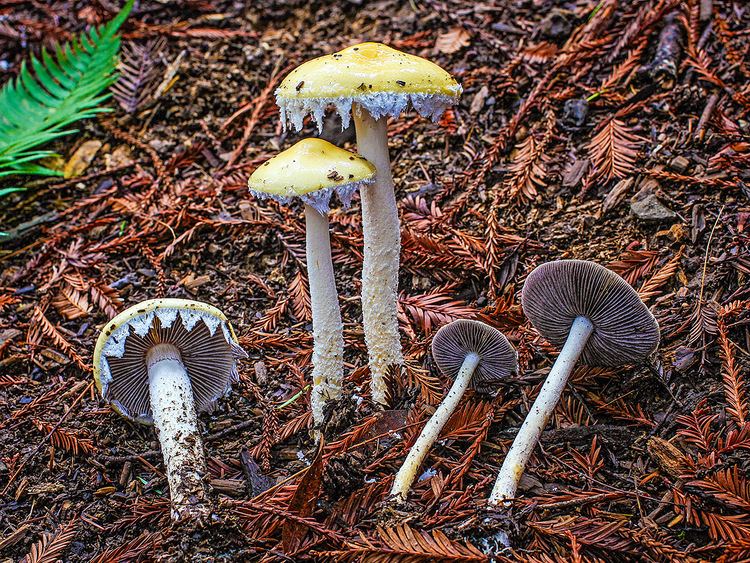Kingdom Fungi Class Agaricomycetes | Division Basidiomycota Order Agaricales Genus Stropharia Rank Species | |
 | ||
Similar Stropharia pseudocyanea, Stropharia albonitens, Gomphidius oregonensis | ||
Stropharia ambigua fungi kingdom
Stropharia ambigua, sometimes known as the questionable Stropharia, is a saprotrophic agaric mushroom, commonly fruiting in leaf litter and wood chips in the western United States and Canada.
Contents
Description

The cap is 3 to 15 cm (1.2 to 5.9 in) broad, obtuse to convex, becomes plain or uplifted in age, has a smooth surface, is slimy when moist, and yellowish. The flesh is white, thick, and soft. The gills are pale gray and gradually darkens to purplish-gray or purplish-black. The gills occasionally pull away from the stipe with age. The stipe is 6 to 18 cm (2.4 to 7.1 in) long and is stuffed or hollow. The veil is soft and white. The spore print is dark purplish to nearly black. The species fruits in the spring and fall. It does not have a volva.
Edibility

The species has been said to taste like old leaves. Because of conflicting reports that they received on the edibility of this species, the authors Orson K. Miller, Jr. and Hope Miller do not recommend eating it. Alexander Hanchett Smith and Nancy S. Weber said that the species is not poisonous. David Arora does not recommend eating this species. The authors of Poisonous plants of California said that the species is suspected of being poisonous.
Distribution and habitat

Stropharia ambigua appears in late fall as a solitary to scattered mushroom or in groups on rich humus, usually under conifers. It can also be found with alder and other hardwoods in the Pacific Coast. It has frequently been found in disturbed areas, such as where wood was handled. The species invade outdoor mushroom beds after wood chips have decomposed by a primary saprotroph. It favors a cold and damp environment.


